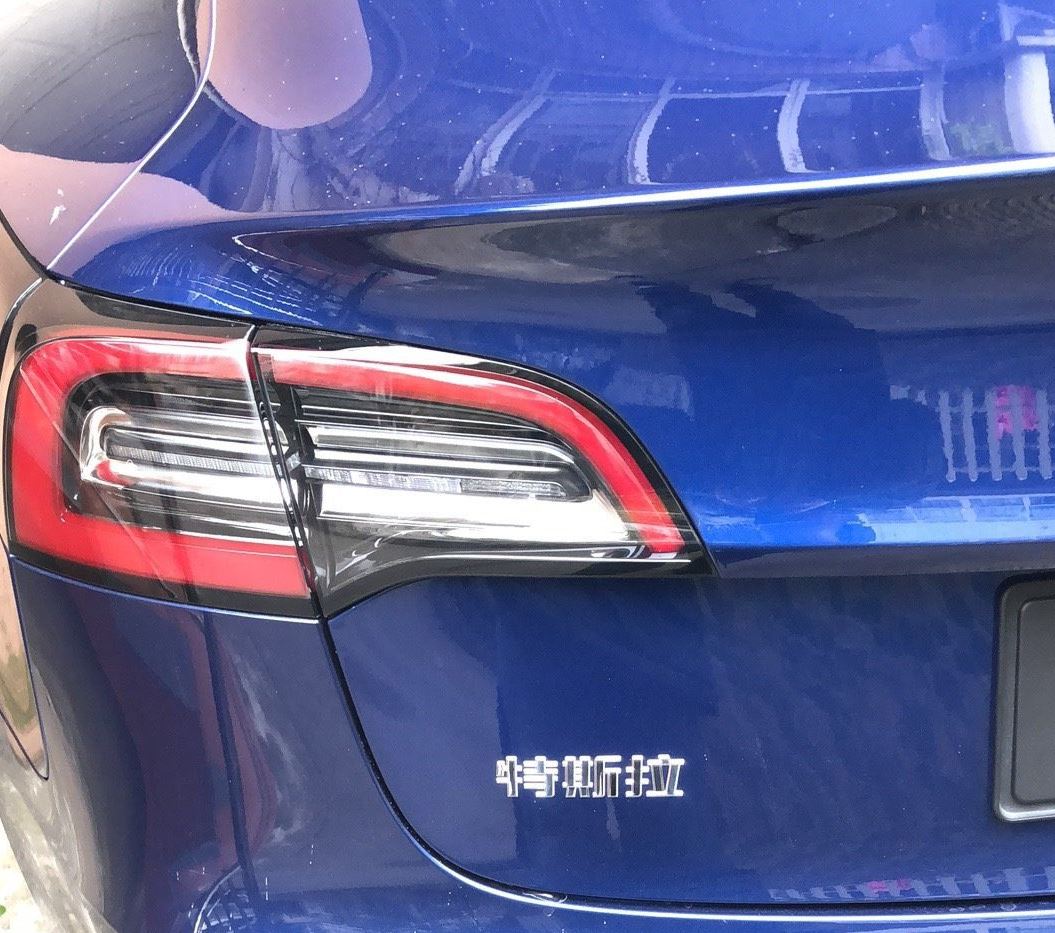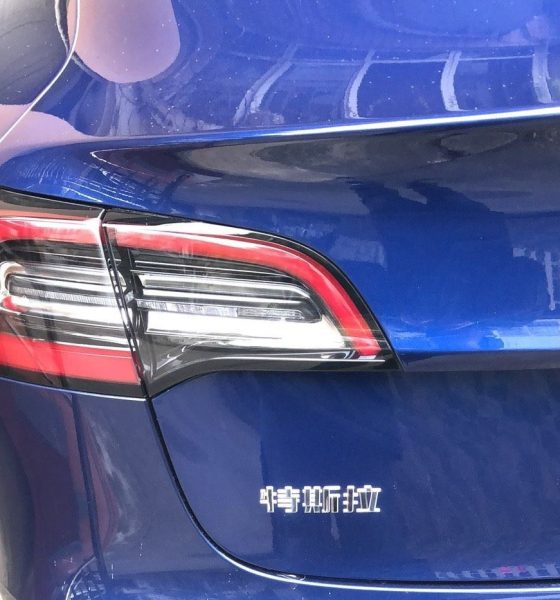

News
Tesla Model 3 gross margin could be as high as 39% in China: report
Recent reports from China point to the idea that the Made-in-China Tesla Model 3 Standard Range+ is making the electric automaker money hand-over-fist, with a nearly 40% gross margin. The large margins Tesla is making on the SR+ Model 3 indicate the company is making a lot of headway in improving its vehicle production process, potentially making way for even more affordable cars.
Tesla owner-enthusiast @Ray4Tesla spotted a post from Chinese technology company Sina Technology, which recently posted details about the MIC Model 3 SR+ and its sizable gross margins.
Sina indicates that the MIC Model 3 SR+ delivered by Tesla in Q1 2020 has a gross margin of 39.37%. This means that with its ¥271,550 price tag ($38,275), the vehicle actually costs ¥188,700 to produce ($26,653). Assuming that Sina‘s figures are accurate, Tesla China could be making a profit of around ¥82,285 ($11,622) per Model 3 SR+ sold.
According to Sina Tech, the gross margin for MIC SR+ Model 3 delivered in Q1 is 39.37%, which is far higher than that of any MBA vehicle. The cost is ¥188,700 or $26,653. Each SR M3 can yield a profit of ¥82,285 or $11,622. The exceptionally high GM signals more price cuts ahead. pic.twitter.com/rBNiEktjqd
— Ray (@ray4tesla) June 12, 2020
This gross price margin exceeds that of any other luxury vehicle, according to Sina.
Automotive veteran Sandy Munro once said that Tesla’s advantage post-COVID-19 would be its ability to build cars in an efficient fashion thanks to the company’s vertical integration. Tesla maintains a shortlist of suppliers for things that the company doesn’t build in-house, but many of its car’s elements are manufactured at or around the company’s Fremont facility. For example, Tesla’s seats are produced at a warehouse just a few minutes from the Fremont production plant.
The vertical integration saves Tesla money by not having to pay suppliers, which also ties into the company’s ability to handle substantial demand shifts.
Tesla has seemingly seen an increased demand in China during the first six months of production at Giga Shanghai. Despite the company’s low sales numbers in April, sales picked up once more as additional configurations of the Model 3 was offered. It should further be noted that April’s dip was not due to decreasing demand. It was because Tesla planned to reduce the price of the SR+ configuration of the sedan to qualify for federal incentives. In May, sales tripled, and the Model 3 was once again the most popular EV in the country.
Tesla’s Chinese battery supplier, CATL, recently developed a million-mile battery pack and has successfully developed a cobalt-free assembly that will reduce the cost of manufacturing. Cobalt is the most expensive metal used in the NCA battery packs that Tesla used. However, Tesla recently received approval to use cobalt-free Lithium iron phosphate batteries (LFP) for its Model 3 in China. This will reduce production costs even further and may even lead to additional price cuts down the road.
Tesla sold 11,095 Model 3s in China in May, according to the CPCA, making it the most popular electric car in the country by a country mile. Several factors drive the car’s popularity, but if Tesla can continue to dial-in price cuts while demand increases, the Model 3 could become the most popular car in China altogether.

News
Tesla China delivery centers look packed as 2025 comes to a close
Needless to say, it appears that Tesla China seems intent on ending 2025 on a strong note.

Tesla’s delivery centers in China seem to be absolutely packed as the final days of 2025 wind down, with photos on social media showing delivery locations being filled wall-to-wall with vehicles waiting for their new owners.
Needless to say, it appears that Tesla China seems intent on ending 2025 on a strong note.
Full delivery center hints at year-end demand surge
A recent image from a Chinese delivery center posted by industry watcher @Tslachan on X revealed rows upon rows of freshly prepared Model Y and Model 3 units, some of which were adorned with red bows and teddy bears. Some customers also seem to be looking over their vehicles with Tesla delivery staff.
The images hint at a strong year-end push to clear inventory and deliver as many vehicles as possible. Interestingly enough, several Model Y L vehicles could be seen in the photos, hinting at the demand for the extended wheelbase-six seat variant of the best-selling all-electric crossover.
Strong demand in China
Consumer demand for the Model Y and Model 3 in China seems to be quite notable. This could be inferred from the estimated delivery dates for the Model 3 and Model Y, which have been extended to February 2026 for several variants. Apart from this, the Model Y and Model 3 also continue to rank well in China’s premium EV segment.
From January to November alone, the Model Y took China’s number one spot in the RMB 200,000-RMB 300,000 segment for electric vehicles, selling 359,463 units. The Model 3 sedan took third place, selling 172,392. This is quite impressive considering that both the Model Y and Model 3 are still priced at a premium compared to some of their rivals, such as the Xiaomi SU7 and YU7.
With delivery centers in December being quite busy, it does seem like Tesla China will end the year on a strong note once more.
News
Tesla Giga Berlin draws “red line” over IG Metall union’s 35-hour week demands
Factory manager André Thierig has drawn a “red line” against reducing Giga Berlin’s workweek to 35 hours, while highlighting that Tesla has actually increased its workers’ salaries more substantially than other carmakers in the country.

Tesla Giga Berlin has found itself in a new labor dispute in Germany, where union IG Metall is pushing for adoption of a collective agreement to boost wages and implement changes, such as a 35-hour workweek.
In a comment, Giga Berlin manager André Thierig drew a “red line” against reducing Giga Berlin’s workweek to 35 hours, while highlighting that Tesla has actually increased its workers’ salaries more substantially than other carmakers in the country.
Tesla factory manager’s “red line”
Tesla Germany is expected to hold a works council election in 2026, which André Thierig considers very important. As per the Giga Berlin plant manager, Giga Berlin’s plant expansion plans might be put on hold if the election favors the union. He also spoke against some of the changes that IG Metall is seeking to implement in the factory, like a 35-hour week, as noted in an rbb24 report.
“The discussion about a 35-hour week is a red line for me. We will not cross it,” Theirig said.
“(The election) will determine whether we can continue our successful path in the future in an independent, flexible, and unbureaucratic manner. Personally, I cannot imagine that the decision-makers in the USA will continue to push ahead with the factory expansion if the election results favor IG Metall.”
Giga Berlin’s wage increase
IG Metall district manager Jan Otto told the German news agency DPA that without a collective agreement, Tesla’s wages remain significantly below levels at other German car factories. He noted the company excuses this by referencing its lowest pay grade, but added: “The two lowest pay grades are not even used in car factories.”
In response, Tesla noted that it has raised the wages of Gigafactory Berlin’s workers more than their German competitors. Thierig noted that with a collective agreement, Giga Berlin’s workers would have seen a 2% wage increase this year. But thanks to Tesla not being unionized, Gigafactory Berlin workers were able to receive a 4% increase, as noted in a CarUp report.
“There was a wage increase of 2% this year in the current collective agreement. Because we are in a different economic situation than the industry as a whole, we were able to double the wages – by 4%. Since production started, this corresponds to a wage increase of more than 25% in less than four years,” Thierig stated.
News
Tesla is seeing a lot of momentum from young Koreans in their 20s-30s: report
From January to November, young buyers purchased over 21,000 Teslas, putting it far ahead of fellow imported rivals like BMW and Mercedes-Benz.

Tesla has captured the hearts of South Korea’s 20s-30s demographic, emerging as the group’s top-selling imported car brand in 2025. From January to November, young buyers purchased over 21,000 Teslas, putting it far ahead of fellow imported rivals like BMW and Mercedes-Benz.
Industry experts cited by The Economist attributed this “Tesla frenzy” to fandom culture, where buyers prioritize the brand over traditional car attributes, similar to snapping up the latest iPhone.
Model Y dominates among young buyers
Data from the Korea Imported Automobile Association showed that Tesla sold 21,757 vehicles to the 20s-30s demographic through November, compared to BMW’s 13,666 and Mercedes-Benz’s 6,983. The Model Y led the list overwhelmingly, with variants like the standard and Long Range models topping purchases for both young men and women.
Young men bought around 16,000 Teslas, mostly Model Y (over 15,000 units), followed by Model 3. Young women followed a similar pattern, favoring Model Y (3,888 units) and Model 3 (1,083 units). The Cybertruck saw minimal sales in this group.
The Model Y’s appeal lies in its family-friendly SUV design, 400-500 km range, quick acceleration, and spacious cargo, which is ideal for commuting and leisure. The Model 3, on the other hand, serves as an accessible entry point with lower pricing, which is valuable considering the country’s EV subsidies.
The Tesla boom
Experts described Tesla’s popularity as “fandom culture,” where young buyers embrace the brand despite criticisms from skeptics. Professor Lee Ho-geun called Tesla a “typical early adopter brand,” comparing purchases to iPhones.
Professor Kim Pil-soo noted that young people view Tesla more as a gadget than a car, and they are likely drawn by marketing, subsidies, and perceived value. They also tend to overlook news of numerous recalls, which are mostly over-the-air software updates, and controversies tied to the company.
Tesla’s position as Korea’s top import for 2025 seems secured. As noted by the publication, Tesla’s December sales figures have not been reported yet, but market analysts have suggested that Tesla has all but secured the top spot among the country’s imported cars this year.








